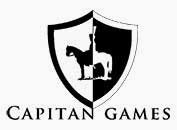Improbable Research is research that makes people laugh and then think.
Improbable Research is also the name of an organization that collects
improbable research. Their goal is to make people laugh, then make them think. They also want to spur the people's curiosity, and to raise the question:
How do you decide what's important and what's not, and what's real and what's not — in science and everywhere else?
They are the administers of the
Ig Nobel Prizes. See below the
2013 winners announced and awarded on September 12, 2013.
MEDICINE PRIZE: Masateru Uchiyama [JAPAN], Xiangyuan Jin [CHINA, JAPAN], Qi Zhang [JAPAN], Toshihito Hirai [JAPAN], Atsushi Amano [JAPAN], Hisashi Bashuda [JAPAN] and Masanori Niimi [JAPAN, UK], for assessing the effect of listening to opera, on heart transplant patients who are mice.
REFERENCE: "Auditory stimulation of opera music induced prolongation of murine cardiac allograft survival and maintained generation of regulatory CD4+CD25+ cells," Masateru Uchiyama, Xiangyuan Jin, Qi Zhang, Toshihito Hirai, Atsushi Amano, Hisashi Bashuda and Masanori Niimi, Journal of Cardiothoracic Surgery, vol. 7, no. 26, epub. March 23, 2012.
ATTENDING THE CEREMONY: Masateru Uchiyama, Xiangyuan Jin, Masanori Niimi
PSYCHOLOGY PRIZE: Laurent Bègue [FRANCE], Brad Bushman [USA, UK, the NETHERLANDS, POLAND], Oulmann Zerhouni [FRANCE], Baptiste Subra [FRANCE], and Medhi Ourabah [FRANCE], for confirming, by experiment, that people who think they are drunk also think they are attractive.
REFERENCE: "'Beauty Is in the Eye of the Beer Holder': People Who Think They Are Drunk Also Think They Are Attractive," Laurent Bègue, Brad J. Bushman, Oulmann Zerhouni, Baptiste Subra, Medhi Ourabah, British Journal of Psychology, epub May 15, 2012.
ATTENDING THE CEREMONY: Brad Bushman, Laurent Bègue, Medhi Ourabah
JOINT PRIZE IN BIOLOGY AND ASTRONOMY: Marie Dacke [SWEDEN, AUSTRALIA], Emily Baird [SWEDEN, AUSTRALIA, GERMANY], Marcus Byrne [SOUTH AFRICA, UK], Clarke Scholtz [SOUTH AFRICA], and Eric Warrant [SWEDEN, AUSTRALIA, GERMANY], for discovering that when dung beetles get lost, they can navigate their way home by looking at the Milky Way.
REFERENCE: "Dung Beetles Use the Milky Way for Orientation," Marie Dacke, Emily Baird, Marcus Byrne, Clarke H. Scholtz, Eric J. Warrant, Current Biology, epub January 24, 2013. The authors, at Lund University, Sweden, the University of Witwatersrand, South Africa, and the University of Pretoria
ATTENDING THE CEREMONY: Marie Dacke, Emily Baird, Marcus Byrne, Eric Warrant
SAFETY ENGINEERING PRIZE: The late Gustano Pizzo [USA], for inventing an electro-mechanical system to trap airplane hijackers — the system drops a hijacker through trap doors, seals him into a package, then drops the encapsulated hijacker through the airplane's specially-installed bomb bay doors, whence he parachutes to earth, where police, having been alerted by radio, await his arrival. US Patent #3811643, Gustano A. Pizzo, "anti hijacking system for aircraft", May 21, 1972.
PHYSICS PRIZE: Alberto Minetti [ITALY, UK, DENMARK, SWITZERLAND], Yuri Ivanenko [ITALY, RUSSIA, FRANCE], Germana Cappellini [ITALY], Nadia Dominici [ITALY, SWITZERLAND], and Francesco Lacquaniti [ITALY], for discovering that some people would be physically capable of running across the surface of a pond — if those people and that pond were on the moon.
REFERENCE: "Humans Running in Place on Water at Simulated Reduced Gravity," Alberto E. Minetti, Yuri P. Ivanenko, Germana Cappellini, Nadia Dominici, Francesco Lacquaniti, PLoS ONE, vol. 7, no. 7, 2012, e37300.
ATTENDING THE CEREMONY: Alberto Minetti and Yuri Ivanenko
The full ceremony video
CHEMISTRY PRIZE: Shinsuke Imai [JAPAN], Nobuaki Tsuge [JAPAN], Muneaki Tomotake [JAPAN], Yoshiaki Nagatome [JAPAN], Toshiyuki Nagata [JAPAN, GERMANY], and Hidehiko Kumgai [JAPAN], for discovering that the biochemical process by which onions make people cry is even more complicated than scientists previously realized.
REFERENCE: "Plant Biochemistry: An Onion Enzyme that Makes the Eyes Water," S. Imai, N. Tsuge, M. Tomotake, Y. Nagatome, H. Sawada, T. Nagata and H. Kumagai, Nature, vol. 419, no. 6908, October 2002, p. 685.
ATTENDING THE CEREMONY: All six co-authors.
ARCHAEOLOGY PRIZE: Brian Crandall [USA] and Peter Stahl [CANADA, USA], for parboiling a dead shrew, and then swallowing the shrew without chewing, and then carefully examining everything excreted during subsequent days — all so they could see which bones would dissolve inside the human digestive system, and which bones would not.
REFERENCE: "Human Digestive Effects on a Micromammalian Skeleton," Peter W. Stahl and Brian D. Crandall, Journal of Archaeological Science, vol. 22, November 1995, pp. 789–97.
ATTENDING THE CEREMONY: Brian Crandall
PEACE PRIZE: Alexander Lukashenko, president of Belarus, for making it illegal to applaud in public, AND to the Belarus State Police, for arresting a one-armed man for applauding.
PROBABILITY PRIZE: Bert Tolkamp [UK, the NETHERLANDS], Marie Haskell [UK], Fritha Langford [UK, CANADA], David Roberts [UK], and Colin Morgan [UK], for making two related discoveries: First, that the longer a cow has been lying down, the more likely that cow will soon stand up; and Second, that once a cow stands up, you cannot easily predict how soon that cow will lie down again.
REFERENCE: "Are Cows More Likely to Lie Down the Longer They Stand?" Bert J. Tolkamp, Marie J. Haskell, Fritha M. Langford, David J. Roberts, Colin A. Morgan, Applied Animal Behaviour Science, vol. 124, nos. 1-2, 2010, pp. 1–10.
ATTENDING THE CEREMONY: Bert Tolkamp
PUBLIC HEALTH PRIZE: Kasian Bhanganada, Tu Chayavatana, Chumporn Pongnumkul, Anunt Tonmukayakul, Piyasakol Sakolsatayadorn, Krit Komaratal, and Henry Wilde, for the medical techniques described in their report "Surgical Management of an Epidemic of Penile Amputations in Siam" — techniques which they recommend, except in cases where the amputated penis had been partially eaten by a duck. [THAILAND]
REFERENCE: "Surgical Management of an Epidemic of Penile Amputations in Siam," by Kasian Bhanganada, Tu Chayavatana, Chumporn Pongnumkul, Anunt Tonmukayakul, Piyasakol Sakolsatayadorn, Krit Komaratal, and Henry Wilde, American Journal of Surgery, 1983, no. 146, pp. 376-382.
ATTENDING THE CEREMONY: Nobel laureate Eric Maskin read aloud the acceptance speech sent by the winners.
See more at Improbable Research site and enjoy it!




















































